Starting a journey on a train is an exciting moment. Smart and considered infrastructure and stunning architecture can add to this wonderful feeling. The world’s best architects and designers work to develop visually expressive transportation hubs that would make catching a train an inspiring experience, no matter if it is a daily commute or a thrilling adventure.
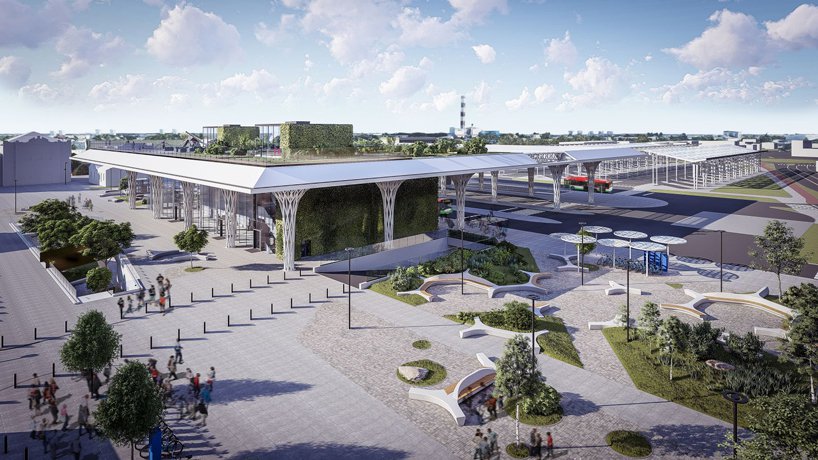
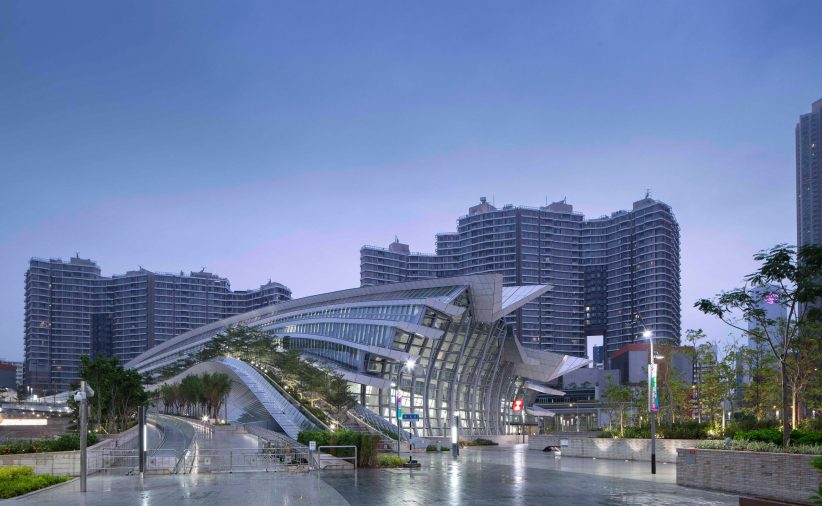
Hong Kong West Kowloon Station by Andrew Bromberg at Aedas
Andrew Bromberg at Aedas, a global architecture and design practice with 12 offices around the world, developed the new Hong Kong West Kowloon Station, one of the largest and busiest underground train stations in the world. Handling passengers travelling the new section of the Guangzhou-Shenzhen-Hong Kong high-speed railway, this 400,000sqm station is more akin to an airport than a mere underground train station.
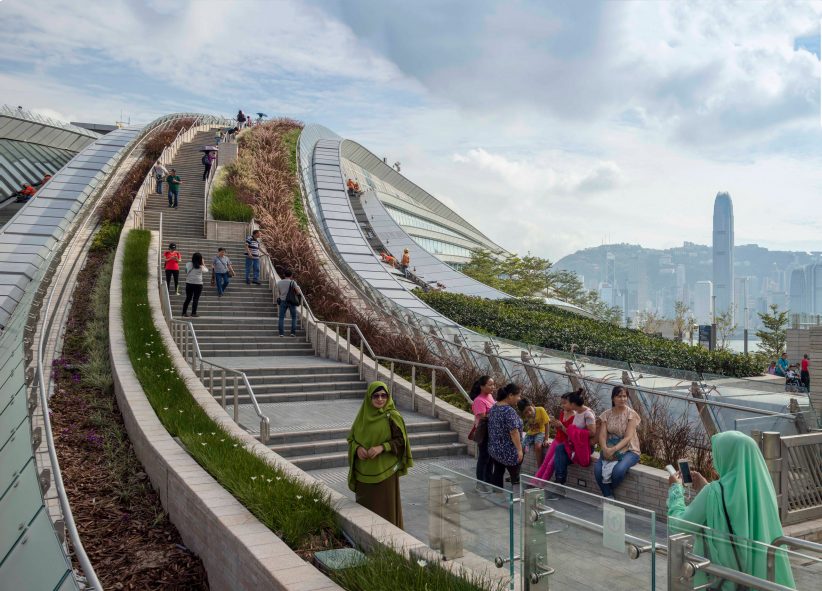
Hong Kong West Kowloon Station by Andrew Bromberg at Aedas
Unlike other buildings of Hong Kong, Bromberg’s design of the station is ground-hugging. With its outside ground plane featuring 3 hectares of ‘green plaza’, the station acts as a new landmark, creating an immediate sense of arrival. People are encouraged to walk up on the station’s tree-aligned rooftop and enjoy the views of Hong Kong Central skyline and Victoria Peak and gain new connections with the city.
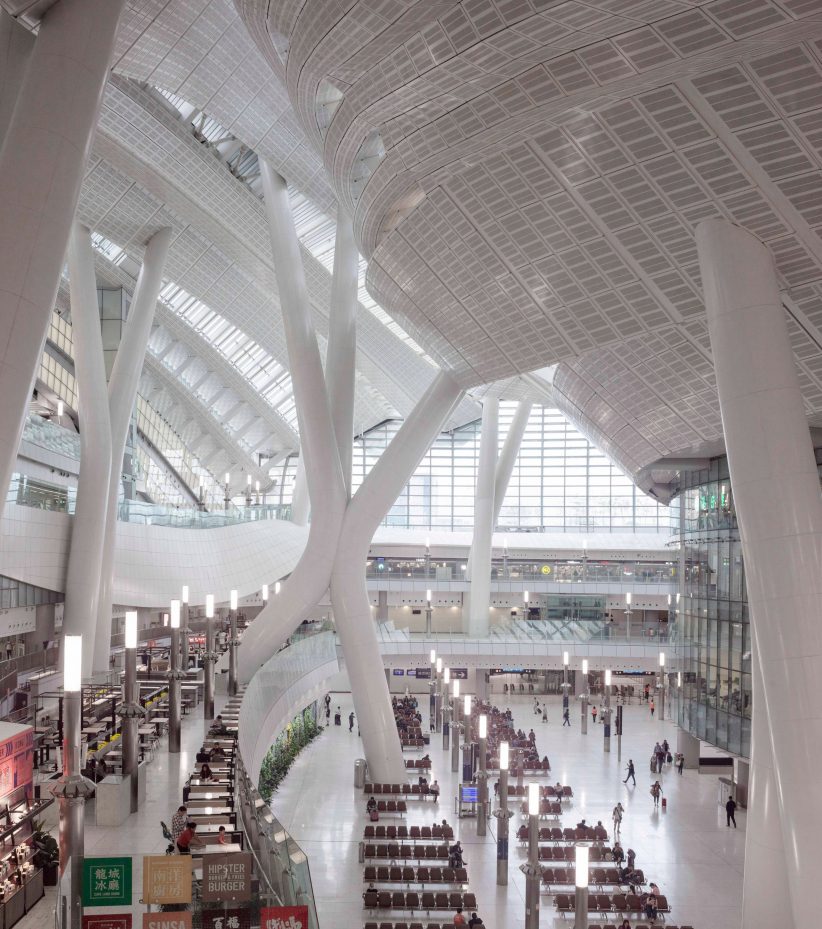
Hong Kong West Kowloon Station by Andrew Bromberg at Aedas
Views can also be enjoyed from inside the building, even its lower level, thanks to 4,000 glass panels which bring in natural daylight. With leaning steel columns supporting a giant floating roof, the station hall inside looks almost like a forest.
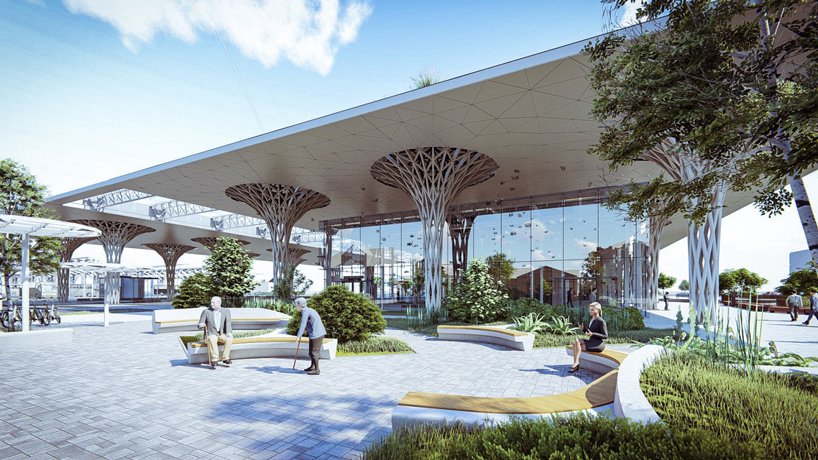
Metropolitan station in Lublin by Tremend Design Office (also header image)
Intermodal metropolitan station in Lublin, Poland by the local design office Tremend, project is designed as a response to problems, related to environmental protection and city life, such as smog, water and energy consumption, noise. The bus station was added to the train station, creating a link between both transit hubs. The roof garden and a green wall integrates nature into the heart of the city and create a welcoming urban environment with green areas, enjoyable for travelers and city residents.

Metropolitan station in Lublin by Tremend Design Office
Internally, all rooms are separated from the hall by a glazed surface. Placing the ‘building inside a building’ lowers energy consumption and enables for heating systems to rely on ground heat pumps. To further decrease the energy consumption by up to 50%, the building will also include energy-efficient LED luminaries, controlling the energy usage depending on the intensity of lighting from outside, the time of day and year. An anti-smog block out of a material containing titanium dioxide transforms toxic fumes into non-harmful substances. Proper air quality will be also maintained by plants specially selected for the production of oxygen.
Bicycle stands and chargers for electric vehicles are added to further extend the ecofriendly architecture into the cityscape.
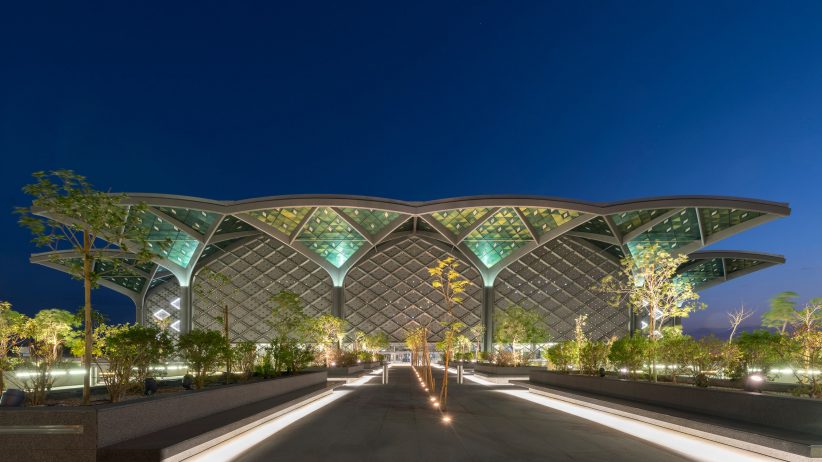
Haramain high-speed stations in Saudi Arabia by Foster+Partners
Foster+Partners designed a series of modular stations for Haramain High-speed, high-speed rail link between the major Saudi Arabian cities of Makkah, Madinah, Jeddah and KAEC. The four stations, inspired by the ancient architectural traditions of the region, were conceived as gateways to each city accommodating the growing passenger demand, from an initially anticipated 60 million to 135 million passengers per year.

Haramain high-speed stations in Saudi Arabia by Foster+Partners
The team used common design elements for all stations along the route. They are all covered by flexible vaulted roofs supported by grids of steel columns – described by the practice as structural trees. Thanks to this grid and modular system, each station can be designed to fit its site and extended to increase capacity in the future. Spherical chandeliers, suspended between the arches, provide focused lighting, mediating between the scale of the roof and concourse level and accentuating the rhythm of the structure.
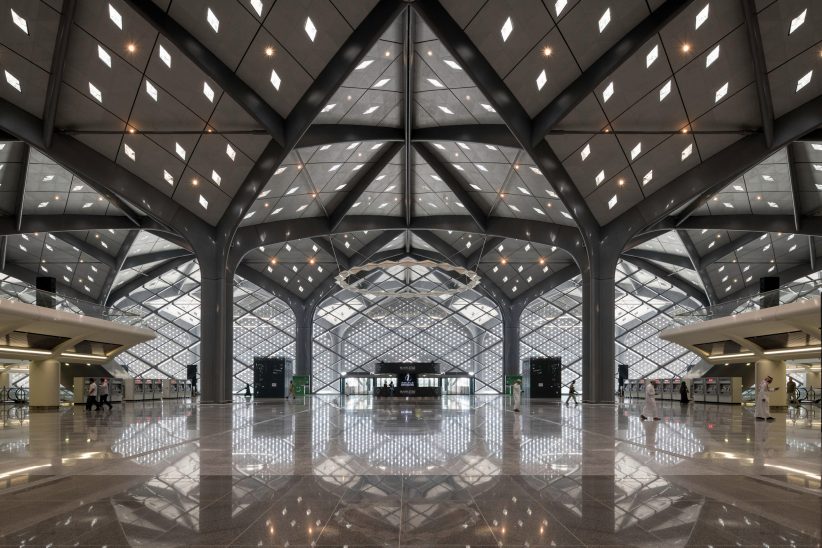
Haramain high-speed stations in Saudi Arabia by Foster+Partners
Meant to provide a shaded retreat from the sun, the station buildings are designed with sustainability in mind and based on principles of felt temperature reduction – from outside the station to the platform, the ambient temperatures are maintained at 28˚C and get progressively lower without the need for mechanical cooling.
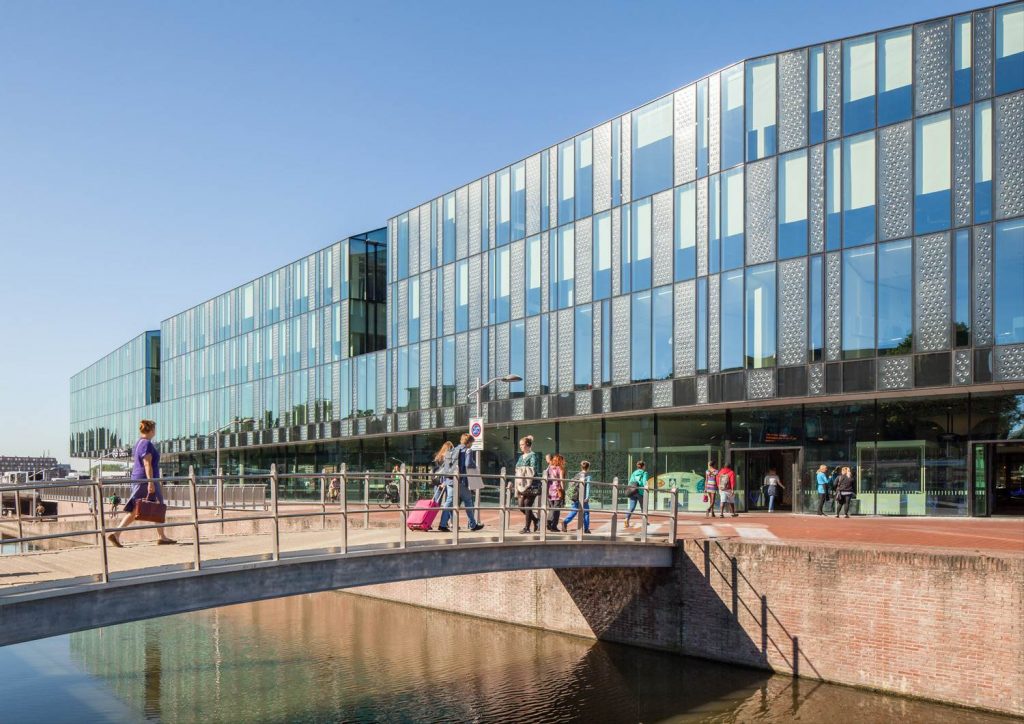
Delft’s railway complex by Mecanoo Architects
The railway complex by the Netherlands-based studio Mecanoo Architects makes arriving in Delft an unforgettable experience. The station is combined with the new city hall by a vaulted ceiling featuring an enormous historic map of Delft and its surroundings, while the station hall, walls and columns are decorated with a contemporary re-interpretation of Delft Blue tiles. Outside, travelers may see the city and the old station as a contemporary version of Johannes Vermeer’s painting ‘View of Delft’.
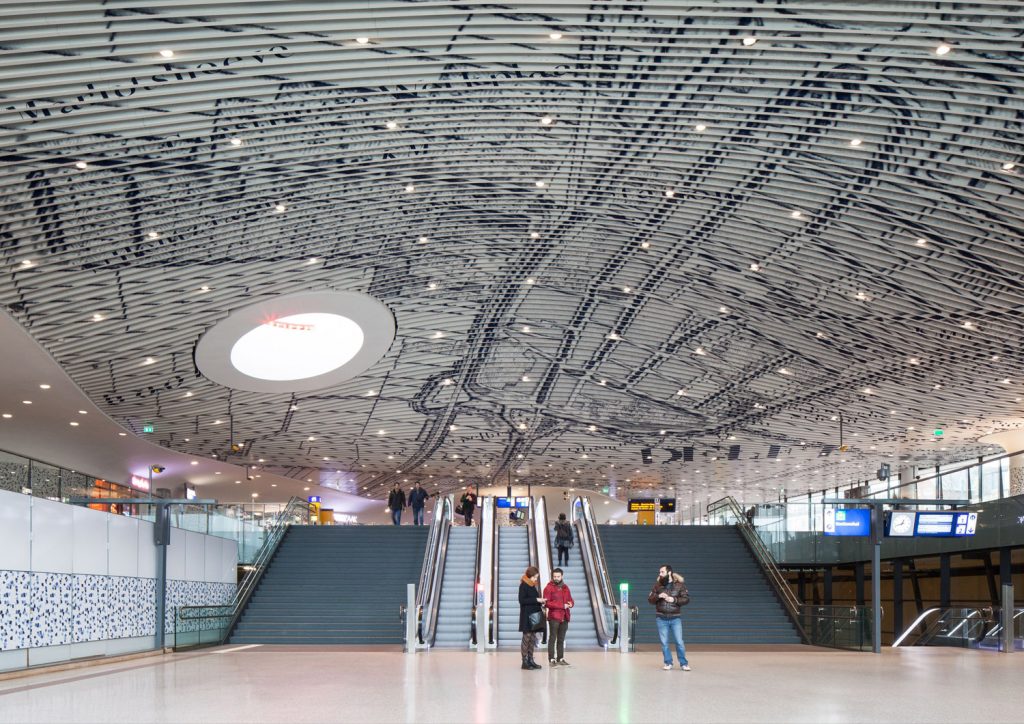
Delft’s railway complex by Mecanoo Architects
The glass façade is designed to reflect the Dutch skies and responds to the different sun orientations, mitigating daylight needs while reducing heat gain in the summer months. The panels of fused glass with lens-like spheres are meant to resemble a vernacular window design traditionally used throughout the historic city.
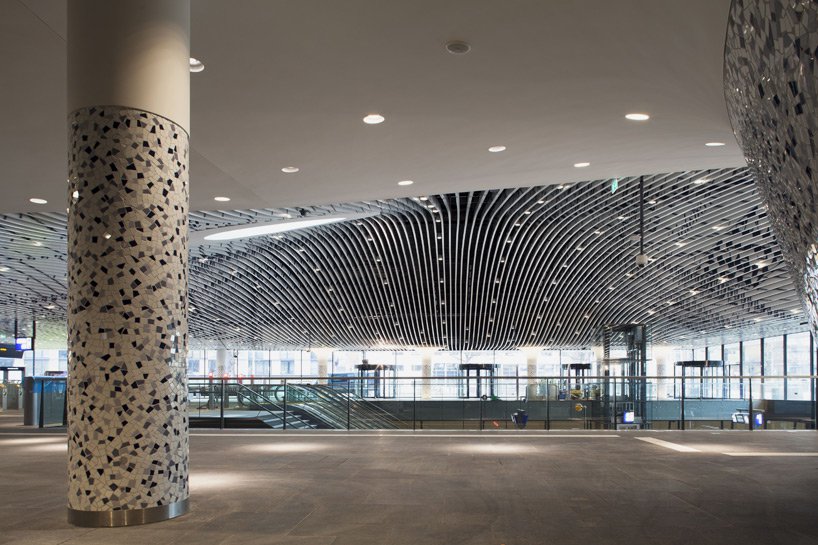
Delft’s railway complex by Mecanoo Architects
Incisions in the glass volume form a pattern of alleyways and courtyards, inspired by the structure of Delft. By creating transparency on the ground floor, interior and exterior intertwine, connecting the station with the city’s daily life.